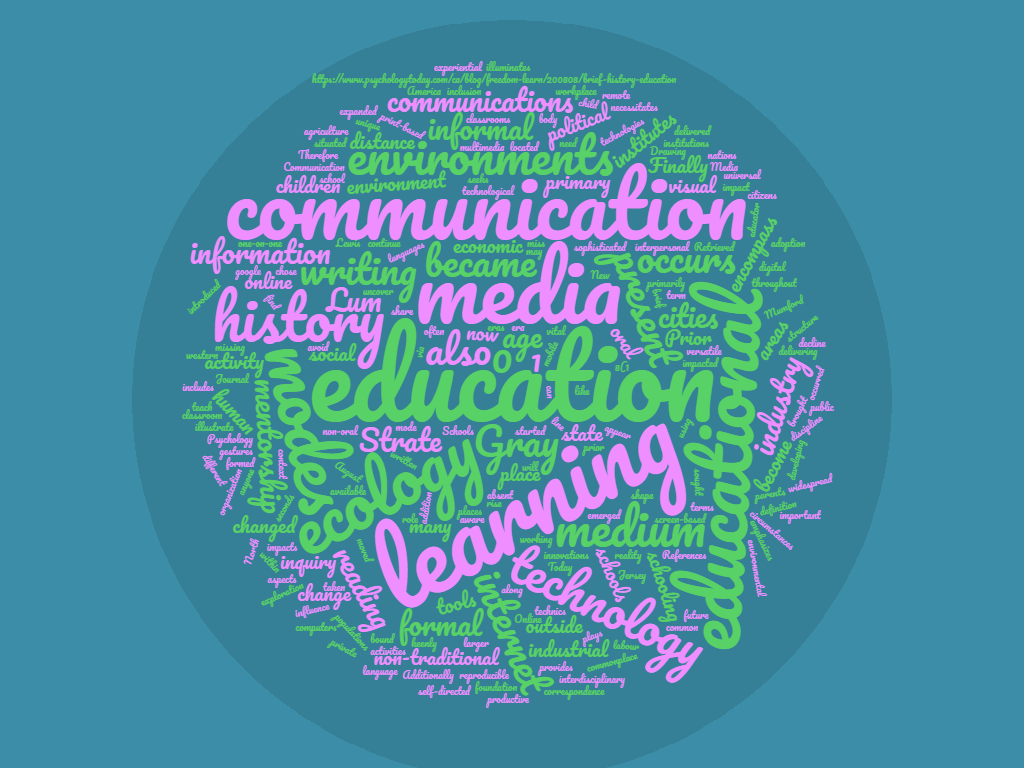As new materialism views bodies, objects, and environments in the flux of intra-action (Toohey, 2018; Charteris, Smardon & Nelson, 2017), I would aim to demonstrate this to educational technologists through a physical demonstration with the room configuration. For example, I would disrupt the participant’s expectations of workshop configuration by starting the class with all chairs lined up against the wall and avoiding the question of where to sit. As participants enter the class, slowly the chairs, tables, and bodies will assemble in intra-action, adjusting and adapting as more bodies and objects are added to the mix. At the start of the workshop, I would explain the room configuration was intended as a demonstration of new materialism, a theory that positions all objects, bodies, social phenomena, and ideas in physical form (Toohey, 2018; Charteris, Smardon & Nelson, 2017). In presenting this idea, I would facilitate a discussion on the experiences of the experiment, focusing on the physical manifestations of different perspectives, social rules, power relations. Similarly, I would turn the discussion to the difference between interaction and intra-action, outlining that interaction treats objects and bodies that interact as discrete with individual characteristics, while intra-action views objects, bodies, ideas in relation to each other (Toohey, 2018). To illustrate this concept even more, I would return to the experiment, explaining how the configuration of people and objects in the workshop space were influenced by each other.
New materialism also disrupts notions of agency and instead positions agency as “the mutual constitution of entangled agencies” (as cited in Toohey, 2018). To demonstrate this to educational technologists, I would return to the physical experiment and explain how their choices of where to sit and how to configure their chairs were intertwined with each other’s choices. Extending the idea of agency, I would emphasize how the configuration of people and objects in the workshop can influence the types of activities and social engagements that take place in the workshop (Charteris, Smardon & Nelson, 2017). Drawing on previous workshop experiences, I would ask participants to consider how their choices, reactions, and perceptions would have differed had they encountered a typical workshop configuration.
Finally, I would turn the discussion to how new materialism can broaden our perspective of education and technology design and best practices. As Hill (2018) illustrates in the comparison of reflective versus diffractive practice, reflective practice seeks to interpret, whereas diffractive practice reads objects and bodies through one another to “Illuminate how difference emerges” (as cited in Hill, 2018). A new materialist perspective can bring focus to difference and how it impacts and excludes beings, objects, and possibilities in our educational technology design (Hill, 2018).
References:
Charterisa, J., Smardona, D. & Nelson, E. (2017). Innovative learning environments and new materialism: A conjunctural analysis of pedagogic spaces. Educational Philosophy and Theory, 49(8), 808–821.
Hill, C. (2018). More-than-reflective practice: Becoming a diffractive practitioner. Teacher Learning and Professional Development, 2(1), 1-17.
Toohey, K. (2018) New materialism and language learning. In Learning English at School (2nd edition). Bristol: Multilingual Matters.
